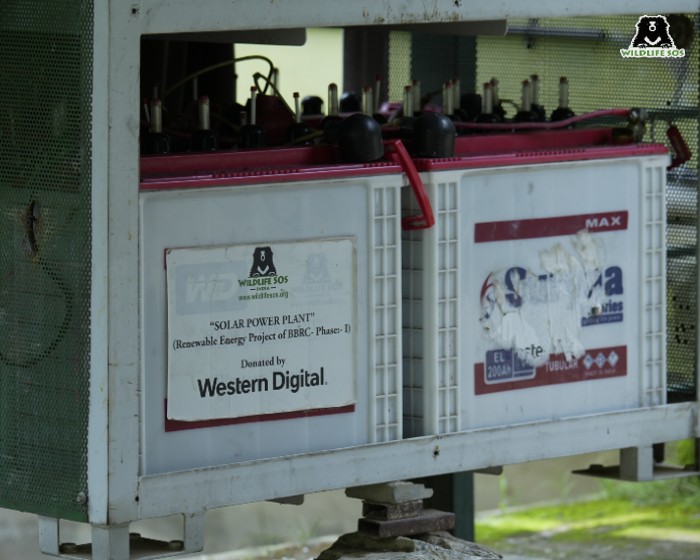Imagine standing outside on a sunny day. Feel the warmth on your skin? That warmth is the Sun’s energy, and it’s much more powerful than you might think! Sun produces about 3.8 x 10²⁶ joules of energy every second. No wonder we are looking to adopt this incredible power for a brighter future!
Solar Energy: The Gift of Sun
The Sun supports almost all life on Earth. This giant ball of hot plasma at the centre of the solar system generates a generous amount of light and heat that Earth warmly receives. Solar energy is the energy created by this light and heat.
Certain human activities have unfortunately come down heavily on our planet. Burning of fossil fuels and destruction of forests have given way to harmful greenhouse gas emissions, which trap the Sun’s heat in Earth’s atmosphere, resulting in global warming and climate change.
The Sun produces immense solar energy through the nuclear fusion that takes place within its core. This solar energy is packed in sunlight and takes 8 minutes and 20 seconds to reach Earth. Not only is it powerful enough to create an alternative source of electricity, It is also the most abundant renewable resource that can help us control the use of non-renewable resources. Clean and endless, widespread use of solar energy can provide electricity to our homes and the diverse places we occupy, and secure a better tomorrow for the planet and its inhabitants.
Wildlife SOS recognises the environmental benefits of solar power and has implemented this at our rescue and rehabilitation centres. On Solar Appreciation Day 2024, we explore how solar energy has proved to be a blessing for our facilities.
Beams of Solar Power at Wildlife SOS
Harnessing solar energy provides an eco-friendly and cost-effective energy solution for daily activities that rely on electricity, significantly reducing greenhouse gas emissions. Solar panels absorb sunlight to produce direct current (DC) using photovoltaic (PV) cells. When sunlight hits the panel, PV cells cause electrons in its materials to flow and generate electricity.
Wildlife SOS’s Bannerghatta Bear Rescue Centre (BBRC), Agra Bear Rescue Facility (ABRF), Elephant Conservation and Care Center (ECCC), and the Elephant Hospital Campus (EHC) have PV panels installed that serve as a substantial source of energy. At the elephant hospital, the inclusion of a PV heating panel has enabled the warming of water at the facility.
Here are the additional ways of how solar power is being used at Wildlife SOS’s rescue and rehabilitation facilities:
- Solar-Powered Fencing
At the Bannerghatta Bear Rescue Centre (BBRC), solar panels provide power to electric fences that safeguard the sanctuary. These eco-friendly fences act as protective barriers that prevent large animals from entering the centre, allowing the rescued bears a secure habitat. Solar-powered fencing is an affordable practice we have taken up in our resource-intensive goal towards animal care and conservation.
- Electricity
The Elephant Hospital Campus (EHC) has a solar generator that is backed by multiple solar panels. Solar energy is being effectively used to operate essential equipment at the hospital. Along with the portable X-ray machine, the in-built pathology laboratory at EHC is equipped with haematology analyser, biochemistry analyser, urine analyser, and microscope — all functionable by solar energy. Solar energy has also been able to provide the general lighting across EHC as well as the Elephant Conservation and Care Center (ECCC).
- Solar Cold Storage
As part of regular healthcare, checkups and treatments of rescued elephants, medical samples such as urine, blood, and faeces are collected, and these require cold storage for preservation. The cold storage units, 4 at EHC and 2 at ECCC, are assisted with solar power so that the units function without any abruption. While benefiting medical processes, solar energy has supported our endeavour to best utilise eco-friendly resources.
Various corporations have come forward to boost Wildlife SOS’s efforts by providing energy efficient solar panels. In the year 2023, a solar panel was graciously donated by Life Insurance Corporation of India (LIC), the country’s largest insurance company, to the Elephant Hospital Campus (EHC), India’s first elephant hospital.
Capco, a Wipro company, also presented the elephant hospital with a 20-kilowatt on-grid solar power plant in order to sustain the ongoing medical protocol for pachyderms. This solar energy system, which includes a solar inverter and up to 60 solar panels, has remarkably reduced the organisation’s electricity expenses.
Such benefactions have helped the organisation alleviate operational costs and direct funds towards rescue, care and medical upkeep of animals. This Solar Appreciation Day, we extend a warm welcome to corporate organisations to lend their support with sustainable initiatives that would not only shrink the worrying carbon footprint, but also ensure the welfare of animals under our care. For more details on this, please get in touch with us at sandhi@wildlifesos.org.






